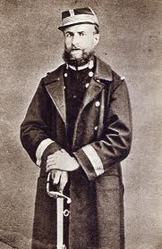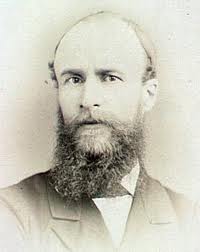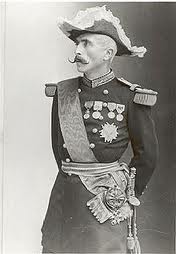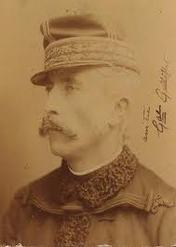 _Name: Hadrien Feraud Date of Birth: 16 August 1984 Place of Birth: Paris, France Hadrien Feraud is a known French Jazz fusion-bassist. His family is very much into music. Originally, Feraud’s inclination was towards playing the drums. But after hearing Jaco Pastorius’ The Birthday Concert, which was a gift from his dad when he was 12, he decided to pursue playing the electric bass. Amazed by Jaco’s musical work, he joined the ranks of youngest and greatest bass players in France in a decade. His musical universe expanded through occasional collaborations. Studying/listening to the works of other musicians and bassist like Christian McBride, Anthony Jackson, Victor Bailey, Skulli Sverisson, Matthew Garrison Gary Willis, Linley Marthe and Richard Bona helped him hone his craft. Up to now, his primary inspirations are the complete musical compositions of Jaco Pastorius and Weather Report. Christian Pegand (the concert manager of Bireli Lagrenes and John McLaughlin) asked Feraud back in 2001 to participate in the ‘bass contre bass’ concert. Playing with Sylvain Luc and Bireli Lagrene on guitars and Frank Agulhon on drums, Feraud created a notable impact. His genuine talent was recognised by Lagrene. In Feraud met Strasbourg’s Jim and Jon Grancamp through Bireli Lagrene in 2002. Jim Feraud (bass), Jim (guitars), and Jon (drums) established a power-trio named ‘Le Cartel’. They played on different stages in the capital of France, around France, and overseas.
 __When he was in Paris, he dedicated his time to the ‘red republicanism’ cause, and began composing articles for the weekly newspaper, ‘La Marseillaise’. Eventually, because of his failure to stage a revolt on 7 February 1870 at Belleville, Flourens was forced to run away from France. On Napoleon’s downfall, he returned to Paris after a short been living in Italy and placed himself as the head of a group of 500 tirailleurs, or sharpshooters. Due to his revolutionary ways, being one of the instigators of the 31 October 1870 uprising against the moderate policy of the provisional government, he was imprisoned at Créteil, nearby Vincennes, ordered by the provisional government, and detained on 7 December 1870 at Mazas, but was discharged by his team on the evening of 21 to 22 January. He joined the uprising of the population on 18 March, was appointed by the XXe arrondissement to be a member of the revolutionary Commune, and was chosen to be general. Gustave Flourens was among the most functional insurrection leaders, and after a raid against the troops of Versailles on 3 April, he escaped into an inn close to the bridge that divides Chatou and Rueil. After he was seized in that area and was neutralised by the Gendarmerie, Captain Jean-Marc Démaret murdered him. Apart from his 1869 Science de l'homme, Flourens also authored several fugitive pamphlets.
 _Name: Gustave Flourens Date of Birth: 4 August 1838 Place of Birth: Paris, France Gustave Flourens, born on 4 August 1838, was a leader and writer during the French Revolution, and physiologist Jean Pierre Flourens’ son. Gustave Flouren’s father was the Collège de France’s Professor and was a deputy from 1838 to 1839. In addition, Gustave was the elder brother of Emile Flourens, the foreign affairs minister under the Third Republic. In 1863, the 25-year-old Flourens undertook, on his father’s behalf, a series of teaching classes at the Collège de France, on the topic of mankind’s history. His theories regarding the human race’s manifold origin offended the clergy, and he was banned from presenting further lectures. Then, he travelled towards Brussels, where he printed his lectures using the heading of Histoire de l’homme in 1863. Afterwards, Gustave Flourens visited Athens and Constantinople and participated in the 1866-1868 Cretan insurrection; he was among the chosen to undergo a complicated mission to Athens for the Cretan Revolutionary Assembly. He tried convincing the enlightened people, like Victor Hugo, who failed to gain entrance to the Académie Française because Flourens was chosen instead of him, to defend the Cretan insurrection. He then stayed in Italy for a while, where an article he wrote in the Fe polo d'Italia triggered his being arrested and cast into prison, and having come home to France finally, nearly died in a duel with the Pays’ editor, Paul de Cassagnac.
 _He was reputed for severity during the Paris Commune’s suppression and became the subject of continuous attacks by the chamber of deputies and the press. In 1872, he went back to Algeria and commanded the Batna subdivision in the campaign against El Golea, overcoming the difficulties of marching across the desert and causing severe punishment to the revolted tribes.
In 1875, Gallifet was promoted to general, and led the 15th infantry division in Dijon, the army corps in Tours, and the army corps in Limoges in 1882. After becoming a member of the Conseil Supérieur de la Guerre in 1885, he carried out the manoeuvres of the cavalry in the following years and earned the reputation as an army commander.
In 1880, he was decorated by Léon Gambetta as the Grand Officer of the Légion d’Honneur and was later nominated to be the governor of Paris. He also received the Grand Cross of the Légion d’Honneur in 1887 and was given the Military Medal in 1891. He retired from active duty after he led cavalry manoeuvres in 1894.
Galliffet was appointed as war minister on 22 June 1899 and played a significant role in French politics, distinguishing himself for his firmness in dealing with cases of conflict in the army. He retired on 29 May 1900 and died at the age of 79 on 8 July 1909.
 _Name: Gaston Alexandre Auguste, Marquis de Galliffet
Date of Birth: 23 January 1830
Place of Birth: Paris, France
Gaston Alexandre Auguste, Marquis de Galliffet was a French general who was born on 23 January 1830 in Paris, France.
In 1848, Gaston Galliffet went into the army, and was promoted to sub-lieutenant in 1853. He had served with distinction during the Siege of Sevastopol in 1855, the Austro-Sardinian War in 1859, and in Algeria in 1860. He later served on emperor Napoleon III’s personal staff for some time.
During the siege of Puebla in Mexico in 1863, he showed great courage but was wounded severely. He went back to France to recuperate from his wounds and was assigned the task of handing the captured colours and standards to the emperor. In 1864, he returned to Algeria and participated in the expeditions against the Arabs. He then went back to Mexico as a lieutenant-colonel and became a colonel of the third Chasseurs d’Afrique in 1867.
Galliffet led the Army of the Rhine during the Franco-Prussian War in 1870-1871, until he was also promoted to brigadier general on 30 August. During the battle of Sedan, he commanded the brigade of Chausseirs d’Afrique in attacking the cavalry division of General Margueritte. Later, he went back to France when Paris was being sieged by the French Army of Versailles. He led a brigade at the time of the repression of the Paris Commune in 1871, making him among the most criticised figures in France.
|





 RSS Feed
RSS Feed